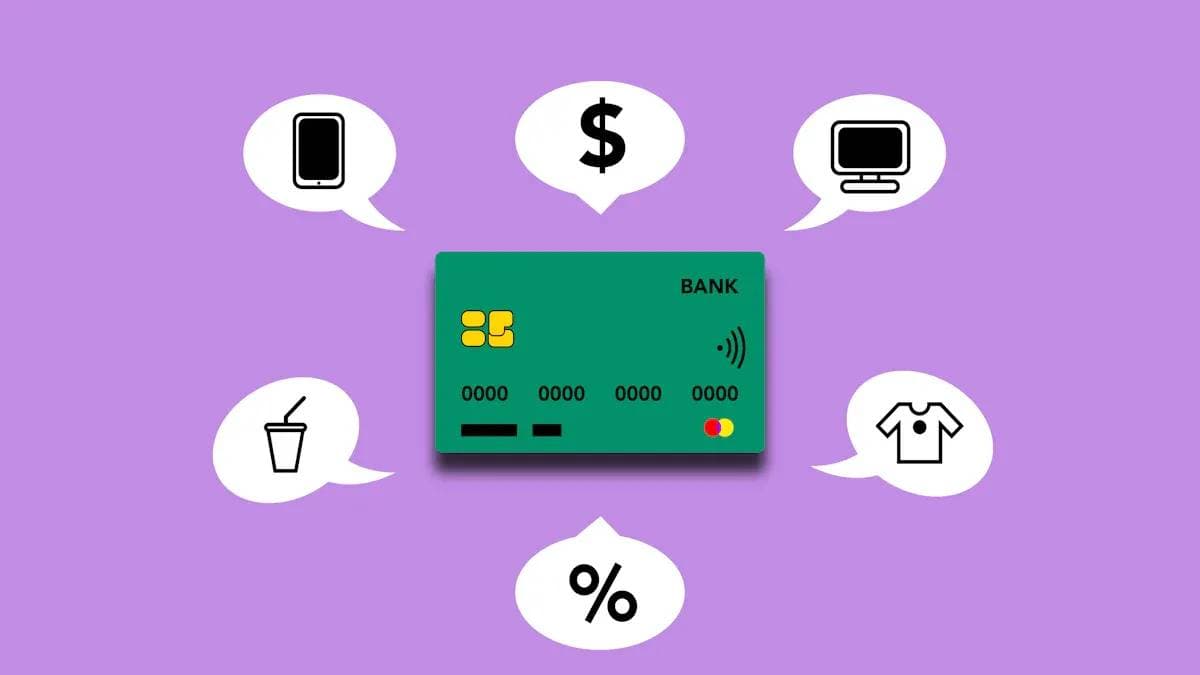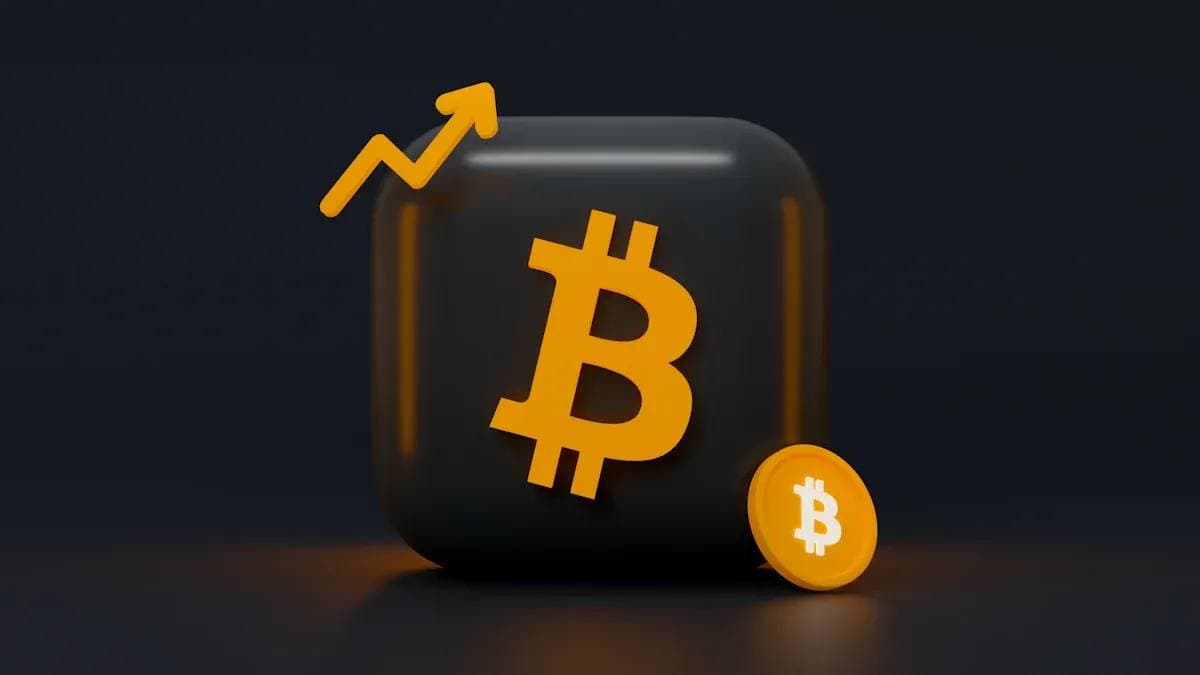- EasyCard
- Trade
- Help
- Announcement
- Academy
- SWIFT Code
- Iban Number
- Referral
- Customer Service
- Blog
- Creator
Seven Core Strategies to Secure International Payments

Image Source: unsplash
Global cross-border e-commerce transaction volume is expected to grow by 107% in the next five years. Is your business ready to embrace the opportunities and challenges? Behind the opportunities lurk risks. Last year alone, overseas bank card fraud in Australia caused up to $63 million in losses. Facing an increasingly complex payment environment, securing international payments has become the key to your stable development. This article aims to build a solid security barrier for you. Whether you are an individual user or a cross-border enterprise, you can find practical protection strategies here.
Key Takeaways
- Choose secure payment channels and ensure they have international certifications and strong risk control capabilities.
- Protect your accounts well by using multi-factor authentication and strong passwords, and restrict employee access permissions.
- Carefully verify the other party in transactions, use identity verification services, and watch for unusual order behaviors.
- Use advanced technologies to protect payment data, such as encryption transmission, tokenization, and AI fraud detection.
- Establish internal management systems, train employees to recognize fraud, and monitor transactions in real time.
Strategy One: Carefully Select Compliant Payment Channels
Choosing an international payment channel is like selecting a key financial partner for your global business. A wrong decision may lead to fund losses, customer information leaks, or even business interruptions. Therefore, the first and most critical step is to carefully select a secure and compliant payment channel.
Verify Service Provider Compliance Qualifications
Your primary task is to verify whether the payment service provider holds internationally recognized security and compliance certifications. These certifications are strong proof of the provider’s ability to protect your funds and data. For example, ISO/IEC 27001 is the global gold standard for information security. When you see service providers like noon Payments or Paytently obtaining this certification, it means they have established an information security management system that complies with top international practices. Before cooperating, be sure to verify their qualifications on their official website or relevant regulatory authority websites.
Evaluate Payment Gateway Risk Control Capabilities
An excellent payment gateway not only processes payments but should also act as an intelligent risk “firewall.” You need to evaluate whether its risk control technology is advanced enough.
Technical Insight: The Power of Machine Learning Leading payment company Stripe uses machine learning technology to reduce a fraud attack known as “card testing” by 80% in two years. Its system can analyze transaction data in real time, identify abnormal patterns, and quickly update defense strategies to counter new attacks.
High approval rates are also an important indicator of risk control capabilities. For example, PaymentCloud’s transaction approval rate is as high as 98%, indicating that its system can efficiently filter fraud while maximizing the passage of normal transactions to avoid business losses.
Understand Risks of Different Payment Methods
Different payment methods have varying levels of security risks. You need to understand these differences to make informed choices.
- Credit Card Payments: Although convenient and fast, credit card fraud remains the main type of global digital payment fraud. Data shows that cross-border payment fraud cases increased by 20% year-over-year, with credit card fraud dominating.
- Digital Wallets: Usually provide stronger security than direct credit card use due to built-in encryption and authentication technologies.
Understanding these risk differences can help you guide customers to use safer methods when offering payment options, thereby reducing overall transaction risks.
Strategy Two: Strengthen Account Access Controls
If the payment channel is the “highway” for your fund flows, then account access permissions are the key “entrance” to this road. Protecting this entrance well is the second solid line of defense against unauthorized transactions. You need to establish a defense-in-depth system for your payment accounts from the three levels of authentication, passwords, and permissions.
Enable Multi-Factor Authentication (MFA)
Single password protection is no longer sufficient to counter today’s cyber threats. You must enable Multi-Factor Authentication (MFA). MFA requires users to provide two or more verification factors (such as password, mobile verification code, fingerprint) to log in.
The two-factor authentication (2FA) many people are familiar with is actually a form of MFA. The concept of MFA is broader and may include three or more verification methods. Enabling MFA means that even if your password is unfortunately leaked, attackers cannot access your account without your phone or biometric features. This is one of the most effective and direct means to prevent account theft.
Set and Manage Strong Passwords
Passwords are the first door to your account security. A strong password should follow the modern guidance principles of the National Institute of Standards and Technology (NIST), rather than outdated complexity requirements.
Expert Advice: Create Your "Password Fortress"
- Length Priority: Prioritize password length. A passphrase composed of multiple words (such as
correct-horse-battery-staple) is far safer than a short and complex password (such asTr0ub4dor&3). It is recommended that high-security system passwords be at least 15 characters.- Character Diversity: Use all printable characters including spaces to create longer and more memorable passwords.
- UsePassword Managers: Do not try to remember all strong passwords. You should use professional password managers to generate and securely store unique complex passwords, avoiding reusing the same password across multiple platforms.
Implement Strict Access Permissions
For enterprise users, not every employee needs access to all payment functions. You must implement Role-Based Access Control (RBAC) and follow the “principle of least privilege.” This means each employee only has the minimum permissions necessary to perform their job.
You can create different user roles based on different departmental responsibilities such as finance, operations, and customer service, and precisely assign permissions to each role. For example, customer service personnel may only view transaction status, while finance managers can authorize refunds. Regularly auditing these permissions and promptly removing excess permissions for departed or role-changed employees can effectively prevent internal risks and permission abuse.
Strategy Three: Strictly Verify Transaction Counterparties
In the digital world, you cannot see every customer in person. Therefore, you must establish a strict verification mechanism to ensure that the party you are transacting with is not a fraudster. This not only protects your funds but is also the cornerstone of building customer trust.
Implement KYC and AML Processes
For enterprises, implementing “Know Your Customer” (KYC) and “Anti-Money Laundering” (AML) processes is a necessary part of compliant operations. This set of processes helps you confirm the true identity of customers and assess their risk levels. A complete KYC process usually includes three core steps:
- Customer Identification Program (CIP): This is the first step in verifying customer identity. According to the requirements of the USA PATRIOT Act, you need to collect and verify basic customer information such as name, address, and identity documents.
- Customer Due Diligence (CDD): At this stage, you need to gain a deeper understanding of the customer’s business background and transaction purposes to assess potential risk levels.
- Continuous Monitoring: Payment security is not a one-time task. You need to continuously monitor account activities to promptly detect abnormal transactions inconsistent with customer historical behavior.
Use Address Verification Service (AVS)
Address Verification Service (AVS) is a commonly used fraud prevention tool in credit card transactions. It verifies transactions by comparing the billing address entered by the cardholder with the address information recorded by the issuing bank.
Key Tip: International Limitations of AVS You need to note that AVS works best mainly in countries such as the United States, Canada, and the United Kingdom. For bank cards in many other countries or regions, AVS may not provide effective verification results (returning code “G” or “I” indicates unsupported or unverified). Therefore, you cannot use AVS as the sole verification method but should incorporate it as part of a multi-layered risk control strategy.
Cross-Verify Orders and User Behavior
Fraudsters’ behavior patterns often reveal clues. By cross-verifying order information and users’ digital footprints, you can effectively identify high-risk transactions. Be alert to the following abnormal signals:
- Geographical Anomalies: The user’s IP address is far from the shipping address, or logs in from two geographically impossible locations in a short time.
- Device Fingerprint Mutations: The user suddenly changes their commonly used device, browser, or operating system during high-value transactions.
- Abnormal Order Behavior: Choosing expedited shipping on the first order or initiating a large number of small orders in a short time, which may be signs of testing stolen card validity.
Combining these behavioral signals with order data analysis can help you intercept fraud before it occurs.
Strategy Four: Apply Advanced Technical Protections

Image Source: pexels
After verifying the identity of the transaction counterparty, you also need to put “technical armor” on the payment data itself. Advanced protection technologies are your last and strongest line of defense against hacker attacks and data breaches.
Adopt SSL/TLS Encrypted Transmission
The “small lock” icon next to your website address bar represents that your data is being securely encrypted. This encryption relies on the SSL/TLS protocol. TLS is an upgraded version of SSL, and the latest TLS 1.3 protocol provides faster speeds and stronger security.
Industry Standard According to Google’s report, over 90% of web browsing is now conducted via HTTPS based on TLS. This indicates that enabling TLS encryption for your payment pages is not only best practice but also a basic requirement for building user trust. It ensures that customers’ payment information is not stolen or tampered with during transmission from the browser to the server.
Comply with PCI DSS Data Standards
The Payment Card Industry Data Security Standard (PCI DSS) is a global guideline that all institutions handling bank card information must follow. Complying with this standard is your core commitment to customers that you can properly protect their sensitive information and the cornerstone of building long-term trust. The standard requires you to establish and maintain secure networks, protect cardholder data, and regularly test security systems, comprehensively ensuring data security from systems and technology.
Utilize Tokenization Technology
Imagine locking the real bank card number in a safe and then using a unique voucher (token) for transactions. Even if the voucher is stolen, the thief cannot use it to open your safe. This is how Tokenization technology works. It replaces the real card number with a meaningless random string (token) for transactions. This way, your system does not need to store sensitive bank card information, greatly reducing the risks from data breaches.
Deploy AI Fraud Detection Systems
Traditional risk control rules are difficult to counter increasingly cunning fraud methods. You need to deploy artificial intelligence (AI)-driven fraud detection systems.
- Intelligent Analysis: Systems like Sift and Accertify use machine learning to analyze massive transaction data, user behavior, and device information in real time.
- Precise Identification: They can accurately identify abnormal patterns hidden in normal transactions, such as account takeovers and payment fraud, and automatically block high-risk orders before losses occur.
Introducing AI not only enhances your defense capabilities but also reduces misjudgments of normal customer transactions while ensuring security, optimizing the payment experience.
Strategy Five: Build Internal Risk Control Systems to Secure International Payments
Technical protections are a solid shield, but internal processes and personnel awareness are your immune system against risks. A strong internal risk control system can reduce vulnerabilities from the source and is an indispensable part of securing international payments. You need to establish a tight internal defense line from the three dimensions of processes, personnel, and monitoring.
Develop Standardized Payment Processes
A clear, standardized payment process can effectively prevent chaos and fraud. You need to establish a clear accounts payable workflow for your team, with every step traceable.
You can refer to the following steps to design your approval process:
- Centralized Receipt Point: Designate a unified receipt email for all invoices to avoid information omission.
- Establish Tiered Approvals: Set different approval permissions based on invoice amounts. For example, invoices below $500 can be automatically approved, while high-value invoices require review by the finance supervisor.
- Clearly Define Role Responsibilities: Clearly define who approves which types of invoices to ensure efficient process operation. 4s. System Integration: Integrate the process with your digital accounting platform to achieve automatic data capture, routing, and recording, reducing human errors.
Regularly Conduct Employee Security Training
Your employees are the first line of defense against fraud, but untrained employees can also become the weakest link. You must regularly conduct targeted security training to ensure every employee involved in payment links has the necessary security awareness.
Core Training Modules Your training plan should at least cover the following key topics, especially for the finance team:
Training Topic Key Content PCI-DSS Compliance Learn how to securely handle, store, and transmit bank card data. Privacy Data Protection Understand the importance of responsibly handling personal information. Phishing Attack Prevention Identify business email compromise, SMS phishing, and phone phishing. Invoice and Wire Transfer Fraud Learn how to verify invoice authenticity and prevent fake wire transfer requests.
Establish Real-Time Transaction Monitoring Mechanisms
Post-incident loss recovery is far less effective than preemptive blocking. You need to establish a real-time transaction monitoring system to continuously observe account activities and promptly detect anomalies.
Key Performance Indicator:Suspicious Activity Alert Volume The total number of alerts generated by the monitoring system in a specific period is an important indicator of its health. A sudden surge in alert volume may indicate new attacks or risks, prompting you to immediately review rules or strengthen defenses. Your goal is to keep the alert volume at a level that the team can review, thereby effectively securing international payments.
By establishing this mechanism, you can shift from passive response to proactive defense, nipping potential losses in the bud.
Strategy Six: Prevent Phishing and Fraud

Image Source: pexels
Even with the most advanced technology and perfect internal processes, attackers will still try to bypass these defenses through deception. Phishing and fraud are psychological attacks targeting you and your team members. You must learn to identify these scams to guard the last personal line of defense for payment security.
Identify Fake Payment Requests
Scammers are good at impersonating platforms or partners you trust, such as PayPal, Stripe or your suppliers. You need to scrutinize every email requesting payment or information like a detective. Be alert to the following danger signals:
- Creating Urgency: Emails often threaten serious consequences if you do not act immediately, using reasons like “account freeze” or “order failure.”
- Information Inconsistencies: The sender’s email address does not match the official domain, or links in the email point to an unfamiliar website.
- Grammar and Spelling Errors: Professional company emails rarely have low-level errors, which is a typical feature of fake emails.
- Suspicious Attachments: Be wary of attachments from unknown sources such as
.zip,.exe, or Word documents, which may contain malware. - Abnormal Requests: The email asks you to perform non-standard operations, such as clicking a link to install a program.
Verify Sensitive Information Requesters
When you receive a supplier’s request to change bank account or other sensitive information, you must never execute the operation based solely on the email. You must verify through independent channels.
Security Best Practice: Perform “Callback Verification” After receiving any request to change bank information, do not use the phone number provided in the email. You should find the contact phone number through the supplier’s official website or other reliable channels, proactively call your known contact, and verbally confirm the change. You can say: “We received your company’s account change request and are now conducting phone verification to ensure the fund security of both parties.”
This simple step is one of the most effective methods to prevent business email compromise (BEC).
Avoid Payments on Insecure Networks
Free Wi-Fi in cafes, hotels, or airports is convenient but a forbidden zone for financial transactions. These insecure networks are ideal places for hackers to steal your information.
When connected to public Wi-Fi, you may face the following risks:
- Man-in-the-Middle Attacks (MITM): Hackers can intercept communications between you and the website like an “eavesdropper,” stealing your passwords and payment card information.
- Fake Wi-Fi Networks: Attackers create an “evil twin” network with a name very similar to the legitimate Wi-Fi. Once you connect, all your data may be captured.
For your fund security, insist on processing any payments or logging into sensitive accounts only on trusted, password-protected secure networks.
Strategy Seven: Make Good Use of Dispute Handling and Protection Policies
Even with the most comprehensive defenses deployed, disputes and fraud may still occur. At this point, a clear response plan is your last safety net. You need to make good use of the dispute handling mechanisms provided by payment channels and banks’ protection policies to minimize potential losses.
Familiarize Yourself with Payment Channel Dispute Processes
When transaction issues arise, time is your most valuable asset. Different payment platforms have vastly different dispute timelines, and you must understand and comply with these rules.
Key Timeline Reminders
For credit card transactions, you can protect yourself through the “chargeback” process. This process usually follows these steps:
- Initiate Dispute: You contact the issuing bank to object to a transaction.
- Bank Review: The bank determines if your dispute is valid and provides you with a temporary credit.
- Notify Merchant: The bank notifies the merchant of the dispute through card organizations (such as Visa, Mastercard).
- Merchant Response: The merchant has about 10 to 35 days to submit evidence proving the transaction’s validity.
- Final Decision: The issuing bank reviews all evidence and makes the final decision. If the merchant’s evidence is insufficient, you retain the credit; otherwise, the credit is revoked.
Understand Bank Zero Liability Protection
Many credit cards offer “Zero Liability” protection, meaning you are not responsible for any unauthorized transactions. However, this protection is not unconditional. You usually need to meet the following requirements:
- You have taken reasonable measures to protect your card information.
- You have immediately notified your financial institution after discovering the card is lost, stolen, or suspicious transactions occur.
Note that this policy may not apply to certain commercial cards or unregistered prepaid cards. Therefore, you should proactively review your bank card’s specific terms to clarify your rights and obligations.
Properly Preserve Transaction Vouchers
In any dispute, evidence is the key to victory or defeat. You must develop the habit of properly preserving all transaction vouchers. For cross-border B2B enterprises, this is not only best practice but also a compliance requirement.
| Sales Type | Key Record Requirements |
|---|---|
| Sales to Non-EU Enterprises | Must retain sufficient records to prove goods have been exported. |
| Sales to EU Enterprises | Must retain proof documents and record the buyer’s VAT identification number. |
Whether individual or enterprise, you should systematically save invoices, order confirmation emails, communication records with sellers, and logistics tracking information. These documents are your most powerful weapons when initiating disputes.
You have now mastered the seven core strategies to secure international payments. They together form a comprehensive defense system from channels and technology to personnel.
Remember, securing international payments is not a one-time task. It is a process that requires continuous attention and dynamic adjustment, with technology, systems, and personnel awareness indispensable.
We encourage you to take action immediately, review and strengthen your own payment security measures. Only in this way can you advance steadily in the complex global trade environment and confidently seize every opportunity.
FAQ
Which Security Measure Should I Prioritize?
You should prioritize enabling multi-factor authentication (MFA). This is one of the most effective methods to protect accounts. Even if your password is stolen, attackers cannot access your account without your second verification (such as a mobile verification code). It adds a key barrier to your fund security.
As a Small Business, Do I Need to Implement All These Strategies?
You do not need to do it all at once. It is recommended to start from the basics: choose compliant payment channels, enable MFA, and use strong passwords. As your business develops, you can gradually introduce more complex strategies, such as AI fraud detection systems, to build a security system that matches your business scale.
What Should I Do When Receiving a Suspicious Payment Request Email?
Please immediately follow these two steps:
- Do Not Click: Do not click any links in the email or download attachments.
- Independently Verify: Contact the relevant party through the official website or a known phone number and verbally confirm the authenticity of the request.
*This article is provided for general information purposes and does not constitute legal, tax or other professional advice from BiyaPay or its subsidiaries and its affiliates, and it is not intended as a substitute for obtaining advice from a financial advisor or any other professional.
We make no representations, warranties or warranties, express or implied, as to the accuracy, completeness or timeliness of the contents of this publication.




Contact Us
Company and Team
BiyaPay Products
Customer Services
BIYA GLOBAL LLC is a licensed entity registered with the U.S. Securities and Exchange Commission (SEC No.: 802-127417); a certified member of the Financial Industry Regulatory Authority (FINRA) (Central Registration Depository CRD No.: 325027); regulated by the Financial Industry Regulatory Authority (FINRA) and the U.S. Securities and Exchange Commission (SEC).
BIYA GLOBAL LLC is registered with the Financial Crimes Enforcement Network (FinCEN), an agency under the U.S. Department of the Treasury, as a Money Services Business (MSB), with registration number 31000218637349, and regulated by the Financial Crimes Enforcement Network (FinCEN).
BIYA GLOBAL LIMITED is a registered Financial Service Provider (FSP) in New Zealand, with registration number FSP1007221, and is also a registered member of the Financial Services Complaints Limited (FSCL), an independent dispute resolution scheme in New Zealand.



















